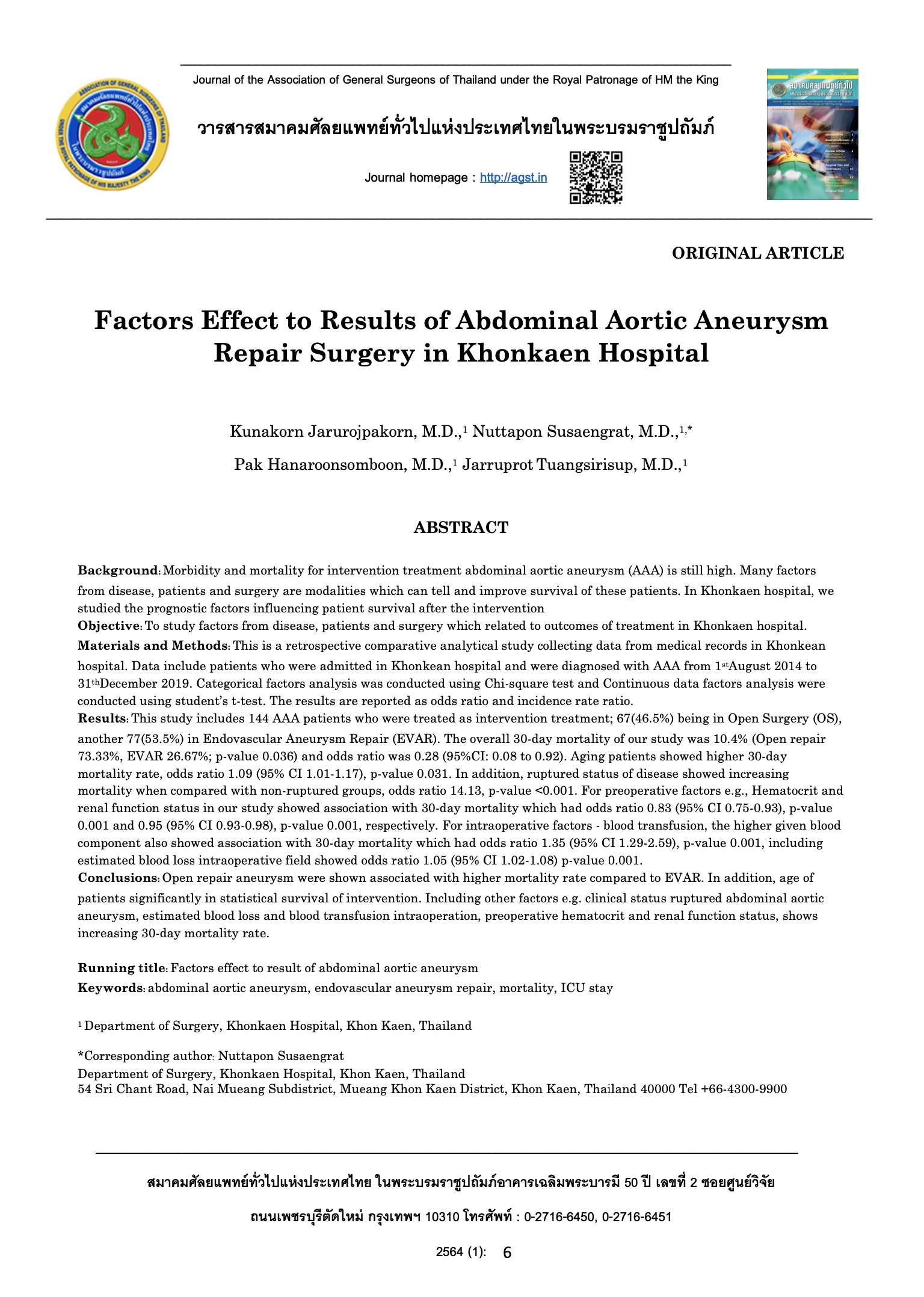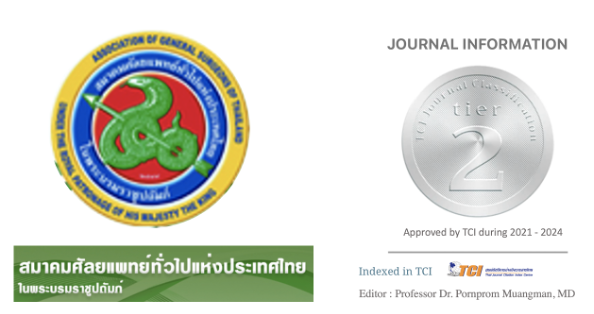Factors Effect to Results of Abdominal Aortic Aneurysm Repair Surgery in Khonkaen Hospital
Keywords:
Abdominal aortic aneurysm, Endovascular aneurysm repair, mortality, ICU stayAbstract
Background Morbidity and mortality for intervention treatment abdominal aortic aneurysm (AAA) is still high. Many factors from disease, patients and surgery are modalities which can tell and improve survival of these patients. In Khonkaen hospital, we studied the prognostic factors influencing patient survival after the intervention
Objective To study factors from disease, patients and surgery which related to outcomes of treatment in Khonkaen hospital.
Methods This is a retrospective comparative analytical study collecting data from medical records in Khonkean hospital. Data include patients who were admitted in Khonkean hospital and were diagnosed with AAA from 1stAugust 2014 to 31thDecember 2019. Categorical factors analysis was conducted using Chi-square test and Continuous data factors analysis were conducted using student’s t-test. The results are reported as odds ratio and incidence rate ratio.
Results This study includes 144 AAA patients who were treated as intervention treatment; 67(46.5%) being in Open Surgery (OS), another 77(53.5%) in Endovascular Aneurysm Repair (EVAR). The overall 30-day mortality of our study was 10.4% (Open repair 73.33%, EVAR 26.67%; p-value 0.036) and odds ratio was 0.28 (95%CI: 0.08 to 0.92). Aging patients showed higher 30-day mortality rate, odds ratio 1.09 (95% CI 1.01-1.17), p-value 0.031. In addition, ruptured status of disease showed increasing mortality when compared with non-ruptured groups, odds ratio 14.13, p-value <0.001. For preoperative factors e.g., Hematocrit and renal function status in our study showed association with 30-day mortality which had odds ratio 0.83 (95% CI 0.75-0.93), p-value 0.001 and 0.95 (95% CI 0.93-0.98), p-value 0.001, respectively. For intraoperative factors - blood transfusion, the higher given blood component also showed association with 30-day mortality which had odds ratio 1.35 (95% CI 1.29-2.59), p-value 0.001, including estimated blood loss intraoperative field showed odds ratio 1.05 (95% CI 1.02-1.08) p-value 0.001.
Conclusions Open repair aneurysm were shown associated with higher mortality rate compared to EVAR. In addition, age of patients significantly in statistical survival of intervention. Including other factors e.g. clinical status ruptured abdominal aortic aneurysm, estimated blood loss and blood transfusion intraoperation, preoperative hematocrit and renal function status, shows increasing 30-day mortality rate.




